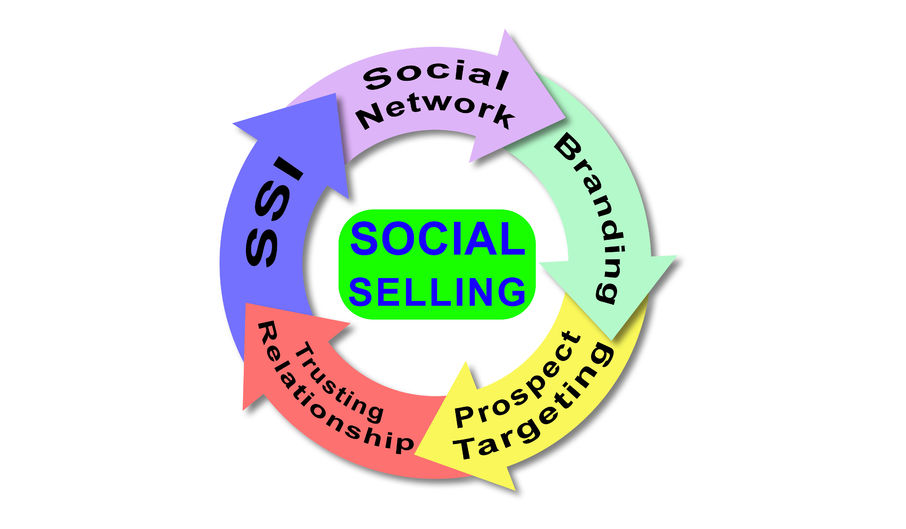In marketing, new trends, evolving technologies and the ability to tap into customer preferences require marketers to continually refine their methodologies. But methodologies alone don’t separate winners and losers. In a saturated marketplace, it’s equally important to demonstrate the behaviors and values that customers and prospects expect and demand from your company and its products or services. The two most important are honesty and transparency.
Category: Marketing
Are Your Emails Going Directly to the Spam Folder?

Emails are one of the most relied-upon and widespread forms of business communications. In fact, 59 percent of B2B marketers say email is their most effective channel for generating revenue. But nothing hurts a company’s marketing efforts more than having emails wind up in the spam folder where subscribers won’t receive their information, offers and announcements. Whether you’re sending a monthly newsletter, building a drip campaign or distributing promotional content, your emails need to comply with regulations to avoid the dreaded spam folder.
How Marketing Departments Separate Themselves from the Pack
Marketing is often referred to as the face of the business. As such, a well-established team that shares a commitment to being the best it can be has the ability to outshine and outperform the competition. To maximize performance, here are 12 vital goals all marketing departments should strive to achieve.
How to Define and Calculate ROI
With an average of 11.3 percent of a B2B organization’s budget allocated to marketing, ensuring a return on investment (ROI) is a constant challenge for marketers. Without a doubt, marketing impacts the bottom line. But are marketers quantifying their contributions to the business in ways that are meaningful and valuable?
5 Localization Strategies to Enrich Marketing

When General Motors released the Chevy Nova in the 1970s, it performed poorly in South American countries. One reason was due to the name, which loosely translates to “no va” or “doesn’t go” in Spanish. Although since proven to be an urban legend, the story gained popularity as a cautionary tale about understanding foreign markets and cultures before entering them. With the proliferation of digital communication, today’s global marketplace is even bigger, but selling globally still requires time, research and consideration of cultures, languages and buyer personas. This process is known as localization, and if your company works internationally, it needs to be a well-thought-out part of your marketing strategy.
How to Harness User-Generated Content in B2B Marketing

User-generated content (UGC) is defined as any type of content created by users of an online platform, whether they are individual consumers or business representatives. This type of content results in others promoting your brand rather than your brand promoting itself. Content can range from product images, blogs, tweets, videos, reviews and other social media posts.
The Top 4 Market Research Challenges

Understanding the needs and market research challenges of your target market is vital to the long-term success of any business. Logically, that knowledge should come from facts, not fiction and be based on extensive research and the careful analysis of the data collected. But market research is only effective when utilized in context and via informed and proven processes.
The Evolution of B2B Marketing

For decades, B2B marketing techniques relied on the same basic principles as consumer marketing. But over the last 20 years, B2B marketing has gone through an evolution and emerged as its own discipline with unique strategies, practices and metrics of success. The way marketing and business has changed over the years mimics the ways our values change as a society. If we compare the two, we discover greater insights into why we make the purchase decisions we do.
A Critical Guide to Marketing Segmentation

As marketers, nothing is more important than interacting with your target market. We’ve discussed ways to identify, interact with and grow a specified target market and communicate with an interactive audience, but the next step, segmenting the audience, is just as important. Segmentation ensures your content and outreach are relevant to your prospects and clients.
Why Is Gamification Becoming a New Marketing Priority?

When we think of “gamers” we often picture teenagers, headphone-clad in a dim room, palming a controller for hours on end. According to a 2017 study, however, 64% of the general US population consider themselves “gamers.” Video game technology and usage have grown exponentially since its inception in the 1970s. As a result, video game technology has infiltrated sectors far beyond the entertainment industry.
How to Cultivate a Successful Marketing Team
Marketing is a rapidly changing and evolving discipline. New technologies, social and behavioral norms, digital marketplaces, business trends, global and cultural influences and communication methods change almost every day. Yet, we expect marketers to not only keep up with the pace, but also count on them to be experts too. While this is a tall order, it is possible to develop high-performing, agile marketing departments.
How to Build a Niche Market
No business can be all things to all people. The more narrowly you can define your target market, the better. This process is known as creating a niche and is a key to success for businesses of all sizes. Niche marketing concentrates marketing efforts on a specific and well-defined segment of the population—the ones whose profiles most closely match your existing customers’ needs.
How to Capitalize on Multicultural Marketing Opportunities
Not long ago, prospects and customers were a more homogenous group, often located in the communities and surrounding areas in which they lived and worked. Today, with the advances in technology and the growth of a multicultural population, companies are expanding their marketing outreach dramatically, both in terms of geography and customer profiles (including age, gender, race and socioeconomic background).
The Top 10 Posts Our Readers Liked in 2018
Happy New Year! Now that the winter holidays are over, most of us are ready to forge ahead and make 2019 even more successful than 2018. During this transition, we tend to reflect on how we did last year, what we learned, what changes and improvements we need to make and what new knowledge we need to acquire.
How to Set Realistic Marketing Expectations
It’s natural for companies to expect immediate return on any investment. The truth is, building a business takes time and patience. Marketing is an essential element to generating business, but unrealistic marketing expectations are common. Setting the bar too high and establishing unrealistic deadlines can result in disappointment and failure. To avoid unrealistic marketing expectations, follow these guidelines to set achievable goals.
9 Tips to Boost Engagement in Your Email Campaigns
Despite the constant parade of new communication apps and technologies, email is still a messaging mainstay. In fact, 86% of professionals prefer to use email when communicating for business purposes. While there are a variety of factors that impact the success of email campaigns, here are some best practices to help you generate the higher response and engagement rates you seek.
50 Marketing Terms You Need to Know
Like with most industries, marketing is filled with jargon. To stay relevant, it’s important to understand today’s industry lingo and buzzwords. The following is a collection of marketing terms to help you brush up on your language and perhaps introduce you to a few new marketing terms.
How to Create Stellar Call-to-Actions (CTA)
The “call to action” (CTA) is an essential component of any marketing initiative. It’s the answer to “what now?” after any article, video, advertisement, blog or other promotional offer. The call to action represents a compelling message that is intended to get your prospects to do what you want them to do. It’s a vital step to lead generation (which 63% of marketers state is their biggest challenge) and also guides prospects through the buying journey.
3 Keys to an Effective Social Selling Strategy

The average person will spend five years of their life on social media. The simple truth is: social networking technology has changed the way we communicate. With expansive networks across multiple platforms, many of us do most of our communicating online. So shouldn’t sales and marketing initiatives follow suit?
How to Refresh Your Marketing Strategy

You’ve been working your 2018 marketing plan since the beginning of the year, but is it delivering the results you expected? No matter how rock-solid your plan was in January, circumstances change, sometimes dramatically. Therefore, it’s important to evaluate your marketing strategy and adjust your approach based on current market conditions and the results of tactics implemented to date.
How to Establish an Effective Marketing Analytics Process

Data-driven marketing analytics is pivotal to the success of any marketing effort. Without the insights and direction analytics provide, companies are behind the curve ball when it comes to establishing and maintaining a competitive advantage. Based on the information collected and analysis of data, marketers can learn how customers interact with a company’s marketing content. For example, analytics show specifics such as how many pages a visitor clicked through before leaving a website or which ads are most effective.
6 Marketing Obstacles and How to Tackle Them

Marketing obstacles are a reality. While they vary from industry to industry, some pain points exist across the board. Here are the most common ones we’ve identified through the years along with some tips on how to overcome them.
Is Account-Based Marketing (ABM) Right for You?
Account-Based Marketing (ABM) is a strategy companies use to build relationships with specific prospects or customers. Unlike traditional B2B marketing that casts a wide net to capture as many leads as possible, ABM focuses sales and marketing resources on a clearly defined group of target accounts. Often, these accounts are assumed to be high-yield and represent the best fit for the organization and its products and services.
What Every Marketer Needs to Know About Content Platforms
Content creation, syndication and consumption platforms are like every other aspect of business. They are constantly changing. Ensure your content represents the quality and achieves the results you want by using this checklist of B2B content platforms.
